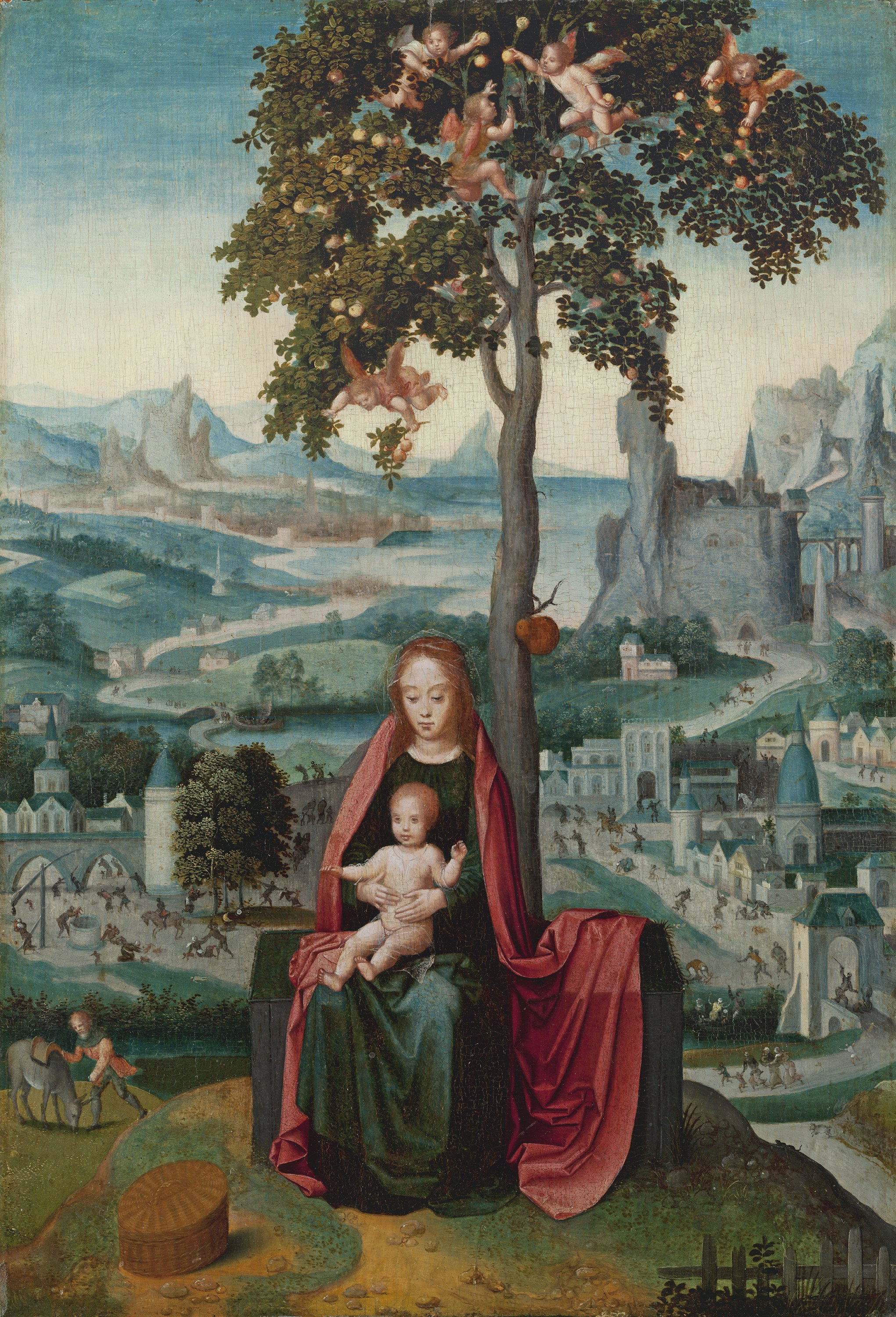The Rest on the Flight into Egypt
From the time of its acquisition by Baron Hans Heinrich Thyssen-Bornemisza this panel was attributed to Adriaen Isenbrant, a follower of Gerard David. However, in 1989 Colin Eisler published a study on the work, attributing it to a Flemish master. The anonymous artist has chosen a frequently depicted subject in religious art, that of the Rest on the Flight into Egypt. In the centre we see the Virgin and Child seated under an apple tree, in the top part of which are various putti collecting apples and playing with them. The composition, which was notably popular in German art, is specifically based on a print by Lucas Cranach the Elder and on a work by Martin Schongauer. The scene is completed by the presence of Saint Joseph at the lower left corner, located in his traditional position in the middle-ground. The background consists of buildings, to which the artist has added some Oriental elements such as the vaulted roofs and an obelisk. The landscape brings to mind the work of Joachim Patinir.
This anonymous artist located the Virgin on a large, rectangular block of stone, looking down with a melancholy expression and presenting the Christ Child, who is seated on her lap and looking towards the viewer. At her feet is a wicker basket, while a small water bottle in the form of a gourd hangs from a branch above her head. Saint Joseph occupies his traditional secondary position in the composition, in this case on the left, tending the ass who is peacefully grazing. The decision to locate the Virgin and Child on a small hill allowed the artist to paint a panoramic landscape with the city of Bethlehem in the middle-ground in which the Massacre of the Innocents is taking place. The animated violence and horror of that event is conveyed on a small scale in the streets and squares of the city, contrasting with the tranquillity of the foreground group. The artist depicted a medieval city dominated by a large castle on a rocky promontory reached by an entrance near the lower right corner of the panel. With some ingenuity, the artist gave the city an Oriental note through the type of roofs of some of the buildings and the obelisk on the right. Behind the city is a broad landscape with paths, fields, groves of trees and areas of water, and with mountains and rocky outcrops that recall the style of Patinir.
One of the principal elements in the centre of the composition is the apple tree with its slender trunk. Various putti play among its branches and collect fruit to offer the Christ Child, a motif to be found in German art. Eisler drew attention to the woodcut by Cranach that popularised this motif and to a drawing by Martin Schongauer. The panel was owned by Joseph Crawhall in London between 1861 and 1913.
Mar Borobia










